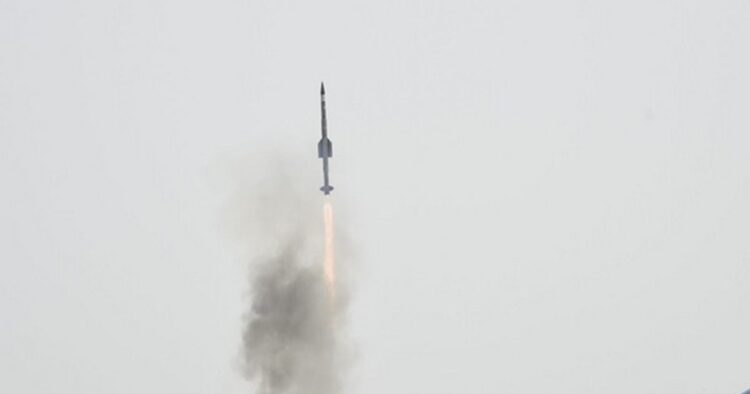India has conducted a second consecutive test successfully of the Vertical Launch Short Range Surface-to-Air Missile (VL-SRSAM) from the Integrated Test Range (ITR) in Chandipur, Odisha, marking a significant milestone in the country’s defence capabilities. The missile, developed by the Defence Research and Development Organisation (DRDO) in collaboration with the Indian Navy, was launched on both September 12 and 13, 2024.
The tests, which were conducted from a land-based vertical launcher, saw the VL-SRSAM intercept high-speed, low-altitude aerial targets, simulating sea-skimming threats one of the most challenging scenarios for naval platforms to defend against. The successful back-to-back flight tests are being hailed as a major step forward in India’s defence production capabilities.
DRDO’s VL-SRSAM system is designed to protect naval assets by providing short-range air defense against a variety of airborne threats, including aircraft, helicopters, drones, and incoming missiles. Equipped with advanced guidance systems, agility, and cutting-edge technologies, the missile system demonstrated its accuracy in neutralizing aerial threats at close range. During the tests, the VLSRSAM system validated various elements of the missile’s operation, including its Proximity Fuse and Seeker.
The system tracked and engaged the targets, showcasing the missile’s agility in complex maritime operations. Many tracking instruments such as radar, electro-optical tracking systems, and telemetry equipment deployed at the test range confirmed the missile’s performance.
The tests further validated the missile’s ability to tackle real-world sea-skimming threats- missiles that travel at low altitudes over the water, making them difficult to detect and intercept. The VL-SRSAM’s ability to respond to these threats ensures the Indian Navy’s platforms are better equipped to handle advanced adversarial missile systems, strengthening India’s maritime air defence.
Rajnath Singh, Defence Minister congratulated the teams at DRDO and the Indian Navy for their achievement. Singh said, ‘This test reaffirms the reliability and effectiveness of the VL-SRSAM weapon system, marking another step forward in India’s self-reliance in defence technology’. He emphasized that the successful trials underline the government’s commitment to boosting indigenous defence production under the ‘Atmanirbhar Bharat’.
Chairman of DRDO and Secretary of the Department of Defence Research and Development, Dr. Samir V Kamat, also applauded the teams behind the tests, noting that the successful demonstrations will significantly bolster the operational capabilities of the Indian Navy. Dr. Kamat said, ‘The VL-SRSAM will serve as a force multiplier, ensuring that our naval forces have the latest technology to combat evolving aerial threats’.
The VLSRSAM system is set to become a component of the Indian Navy’s defence arsenal, providing a robust mechanism for countering short-range aerial threats in maritime environments. The missile system is expected to bolster the Navy’s ability to neutralize threats such as aircraft, helicopters, and drones, along with more advanced missiles designed to evade traditional detection methods.
The flight tests carried out on both days highlight the missile’s reliability in high-pressure scenarios, paving the way for its potential deployment on Indian Navy ships.

















Comments